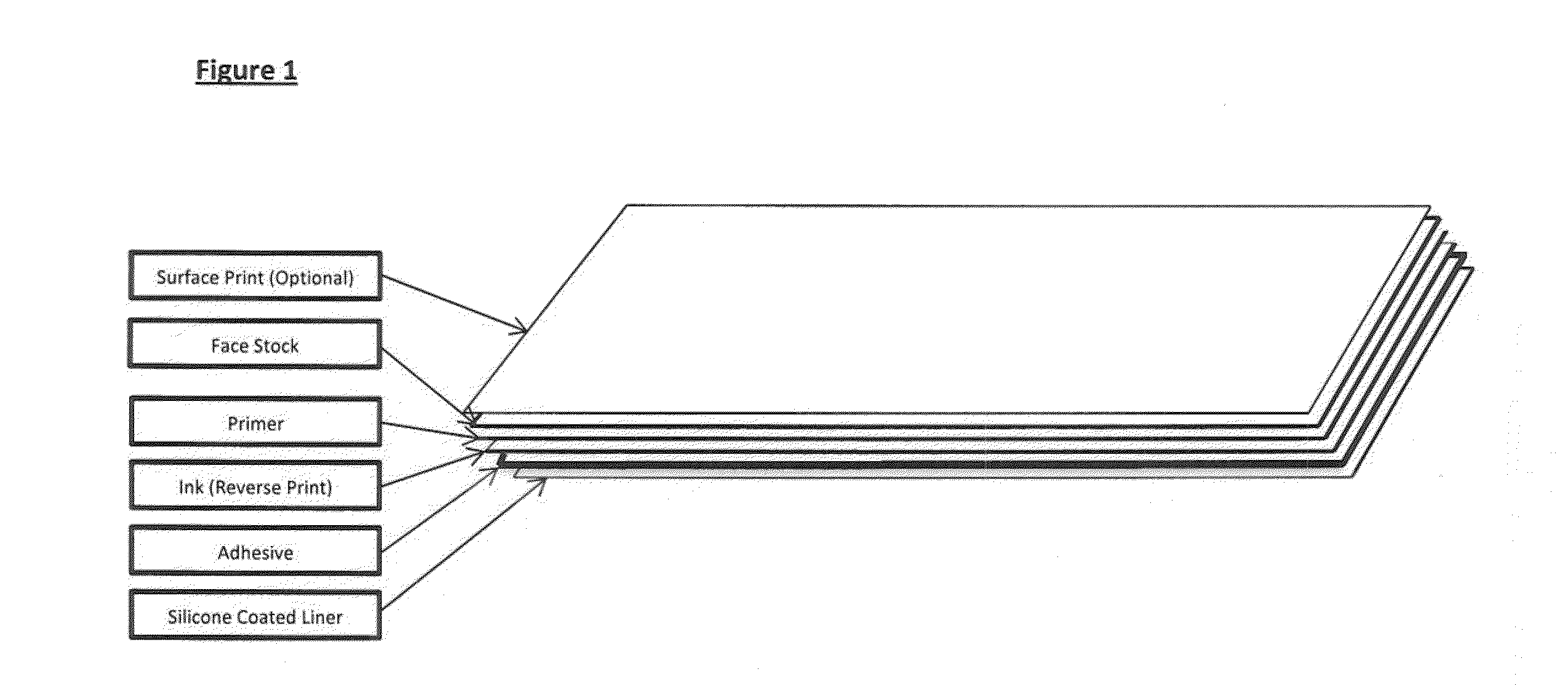Method of manufacturing reverse-printed, pressure sensitive cut labels
a technology of reverse printing and cut labels, applied in the direction of identification means, seals, instruments, etc., can solve the problems of cumbersome label manufacturing process, requiring a relatively long air drying time, and requiring a roll of glassine paper to be hung and unwound, so as to reduce waste and cross-contamination of materials, reduce the amount of work, and eliminate the separation of work
- Summary
- Abstract
- Description
- Claims
- Application Information
AI Technical Summary
Benefits of technology
Problems solved by technology
Method used
Image
Examples
Embodiment Construction
[0026]The present invention relates to a method of producing reverse-printed, pressure-sensitive cut adhesive labels in a single pass and may include and use any label face stock material, whether on paper bases (both natural fiber paper and synthetic fiber paper or combinations thereof), polymeric film, metal foil, and combinations of these materials. The release liner portion of the invention may include and use any natural or synthetic paper fiber stock or polymeric film, or combinations thereof, pre-coated with a pressure-sensitive silicone layer. The label face stock may be printed in-line or on a secondary line and the reverse-printed label stock fed into the process using any known unwind mechanism and then conveyed to the adhesive coating station. The label face stock may be printed on only the reverse side, only the surface, or on both sides of the label face stock. The printing method can be flexographic, rotogravure, offset, letterpress, digital, silkscreen, or other mean...
PUM
| Property | Measurement | Unit |
|---|---|---|
| Fraction | aaaaa | aaaaa |
| Temperature | aaaaa | aaaaa |
| Adhesion strength | aaaaa | aaaaa |
Abstract
Description
Claims
Application Information
 Login to View More
Login to View More - R&D
- Intellectual Property
- Life Sciences
- Materials
- Tech Scout
- Unparalleled Data Quality
- Higher Quality Content
- 60% Fewer Hallucinations
Browse by: Latest US Patents, China's latest patents, Technical Efficacy Thesaurus, Application Domain, Technology Topic, Popular Technical Reports.
© 2025 PatSnap. All rights reserved.Legal|Privacy policy|Modern Slavery Act Transparency Statement|Sitemap|About US| Contact US: help@patsnap.com



